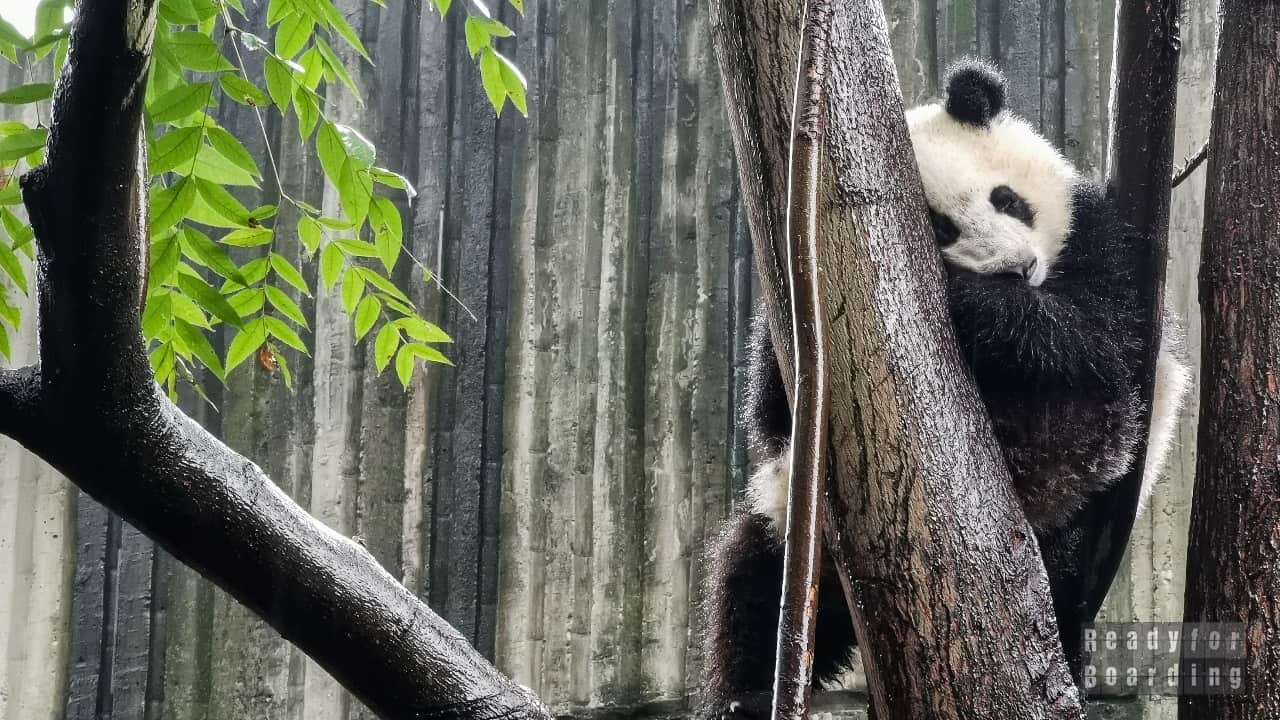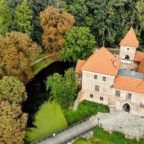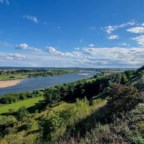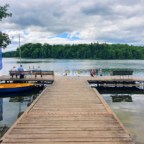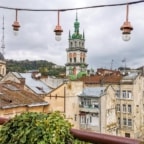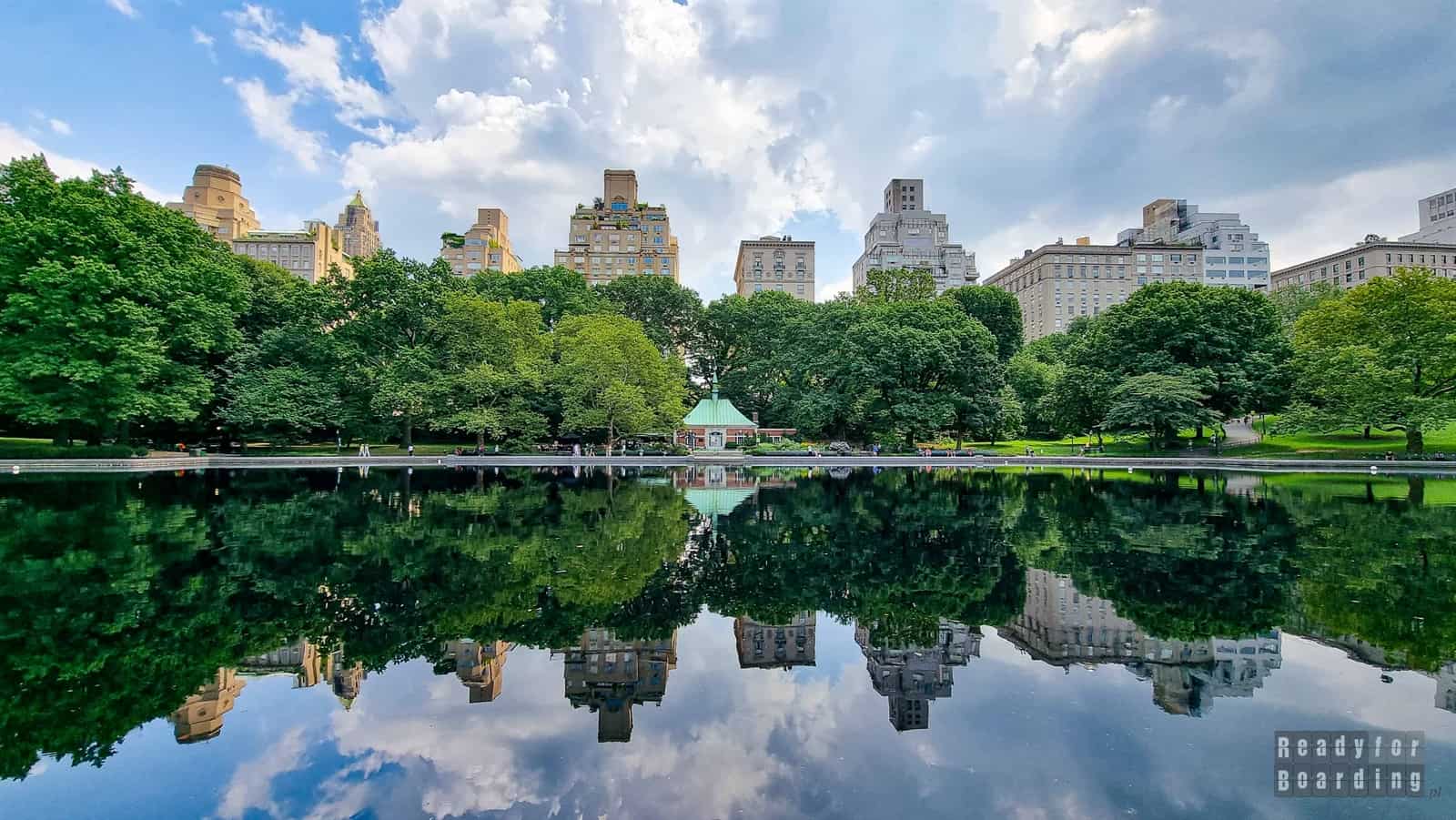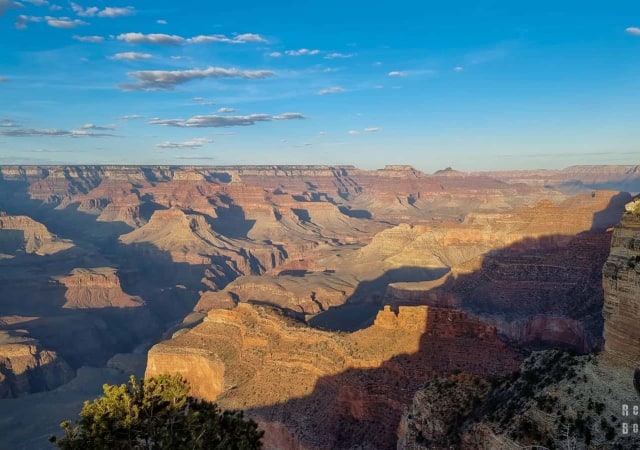Chengdu is associated by many only with pandas! This is not surprising, as the region is home to the largest relief and breeding centers for these animals. Unfortunately, in China, if something is very popular it means no less than a crowd of tourists. You can read about our preemptive battle with the weather and the crowds of visitors in the post below :)
We flew to China specifically to see the famous breeding and research centers for giant pandas. We were in three centers in Sichuan province, with only one being in Chengdu itself. The others are significantly far away, but a trip to them is also an opportunity to see interesting parts of China. In this post, we will focus on Chengdu itself and the most well-known center for the study of giant pandas, the Chengdu Research Base of Giant Panda Breeding (or more simply, colloquially known as Chengdu Panda Base).
First, however, in a word of introduction what do such centers do? Their main task is to protect the species. If it weren’t for such places probably the giant panda would already be an extinct species. It is here, under the guidance of experts, that the pandas breed and the little ones are cared for.
Wouldn’t it be better to leave the pandas alone to let nature do its thing?
It is important to know that reproduction in pandas is low…. with a small number of individuals there is relatively less chance of fertilization. In addition, in the wild, a mother panda is only able to rear one little one (the other is abandoned), and the process takes a year and a half, which means that the next pregnancy may not occur until 2-3 years later. The pandas in the wild most simply could not keep up with their offspring to preserve the species with the current number of individuals (less than 2,000).
Of course, if the population were larger this reproduction would be sufficient to preserve the species. Add to this the fact that their habitat is being destroyed for agricultural fields, and there is also the not insignificant climate change going on in the areas where pandas are found.
And yes, we know that it is the people who have inflicted such a fate on the great pandas and it is now incumbent on the people to help. So how are such centers doing? Intermittently, although as you may know the species of giant pandas is no longer classified as an endangered species, but as a species at risk of extinction, so the measures taken in Chinese centers are having an effect.
On the other hand, however, the resorts are now simply tourist attractions, and the pandas have zoo-like enclosures so that visitors, while also feeding the piggy bank of such resorts, can feast their eyes on the white and black hairy balls.
So we decided to see what the facilities look like.
Table of contents
Great Panda Breeding Research Base in Chengdu
As we have already mentioned, Chengdu is home to the most popular center for research on giant pandas among tourists. This is where tourists hit the ground running, as it is more accessible than other resorts that are far away and hidden in the valleys.
Let’s start with the location of the resort itself. It is located in the city of more than 16 million people, in its northeastern part, on Panda Avenue :) We emphasize this because this facility is by no means in the very center of the city, and getting here can be a hassle.
Getting to the base: after our previous experience of riding around the outskirts of Beijing by bus, we immediately rejected taking this mode of transportation ;)
There is a subway (line 3) to the resort, and the station is quite close to the entrance to Chengdu Panda Base. Of course, the entire station is full of pandan accents. In fact, so is the access road, which is strewn with billboards and pandas in every form. Near the entrance, too, you’ll find figurines of pandas, which everyone eagerly takes pictures with.
It’s best to arrive at the center first thing in the morning, because that’s when the pandas are most active. At least that’s what everyone recommends ;) We were in the morning, and indeed, we saw a few active individuals, but the vast majority were lazily lying on the branches of trees. Surprisingly, in one of the pavilions we could observe quite active pandas playing long after noon, so there is no rule. Being around 9 a.m. at the entrance, there were no checkout queues. Unfortunately, this could also have been due to the heavy rain that accompanied us for the rest of the day ;-)
The center was established in 1949 and celebrated its 70th anniversary in 2019. It is not the most modern facility in the world, but it absolutely cannot be said of it that it is neglected. Currently, some buildings are undergoing renovations, new ones are being built, and the paddocks, although run-down are clean and well-maintained. Also, the infrastructure for visitors is adequate, adapted for wheelchairs (for the most part!).
Chengdu Panda Base is divided into sections with multiple enclosures for pandas. Pandas are divided into enclosures by age, i.e. there are enclosures for smaller and mature individuals (although being more correct we should use the word HOUSE instead of enclosure). There is also a “nursery” where care is given to the little ones who are still dependent on the caregiver: there were 3-month-old pandas at Sunshine House during our visit in October, and two-week-old toddlers at Moonlight House.
And here let’s pause for a moment, because it is these two houses that attract the largest crowds of visitors. It should be added that we were very lucky, because exactly 2 weeks before our arrival the little ones were born in a resort in Chengdu, so we were able to see through the glass 14-day-old scurvy! We didn’t count on it, because it’s rare for late autumn to bring little ones into the world!
Of course, the queue for the smallest pandas is mercilessly long and chaotic. Once you make it to the glazing behind which the hairy orbs hide, security rushes in and hurries you along so you don’t spend too much time looking. We had a bit of a head start, because not only were they white, but also with children…. They let us stand for a long while ;-) Of course, we appeal here for peace and quiet in such rooms. Despite bans on lamps and knocking on glass, we saw many tourists doing just that.
In addition to these two nurseries, there are many other outdoor and covered enclosures for older individuals. We can peep at the pandas, who sit quietly in the trees, eat endless amounts of bamboo, brood on the ground and do NOTHING. Yes, they really are quite lazy animals and there is nothing to expect a lot of activity and twists in panda relationships.
The paddocks are quite large, well-maintained, clean. Pandas have a lot of space and, importantly, they have room to hide, to get away from noisy visitors. Let’s not kid ourselves, the Chinese are quite loud…. they just have it that way, but it can sometimes be annoying for people and even more so for animals.
It should also be added that in addition to giant pandas, we can also meet red pandas here – they are no less popular among visitors.
Walking between each panda’s home is a longer walk. We didn’t mind, but many people took advantage of the extra-paid melex ride.
Instead, we were heavily disturbed by the rain. Unfortunately, the weather is out of our control, and we hit a day when it was pouring all day, and we were largely focused only on looking for a patch of roof and protection from the rain. So we spent a lot more time in the pavilions than outdoors. Olive so far associates pandas with rain and cold, because in each successive center with pandas we ended up in similar weather conditions…. will have to make a second approach someday and show the children that the sun also shines in Chengdu ;)
There are restaurants and cafes on the premises, but during our stay we had the impression that some of them were closed (we don’t know if it’s a matter of weather, the end of the season, or maybe it’s always like this). We sat in one restaurant, but the main pandan accent was a movie projected on a large screen over the tables and mascots attached to the stairs and railings. Unlike a similar diner at the Singapore Zoo here, we didn’t get a themed menu or interesting, creative touches. Unfortunately, we were met here with an unpleasant accent in the form of a cockroach walking on the floor, but well… such a climate :)
If we were to sum up our stay at the Chengdu Research Base of Giant Panda Breeding, we unfortunately have to admit that the weather has greatly affected what memories we have. However, trying to leave out this aspect, it positively surprised us that it was not so terribly crowded…. Fact, there were lines for toddlers, but other than that, there were places where we were completely alone (again, maybe a matter of weather). The facility is very commercialized, many of the solutions seem to be made for tourists, not pandas, but we want to believe that it is through the work of such centers that a brighterzłlies ahead for pandas.
Chengdu
However, Chengdu is not just about pandas, although they largely dominate the city and are its symbol. At least small pandan accents can be found at every turn. There’s no shortage of the big ones either, and let the giant panda hanging at the popular IFS mall be a testament to that. There is even a special place on the roof for taking photos with the panting panda.
The city is bustling both during the day and in the evenings: the streets are lined with crowds of people, it is loud, colorful, intense. Exotic smells are coming from everywhere, as at every turn you’ll find whether it’s a restaurant, take-out food or mobile carts selling a variety of delicacies.
But is there anything else worth noting here?
If you have the opportunity take a look at People’s Park. A green oasis in the heart of the city. It may not be the most peaceful and quiet place, but the trees, rockeries, ponds, bridges, footbridges and flower compositions allow at least a brief respite from the neon lights, screens and cramped buildings. Here you can take a boat ride, take a walk, watch the works of artists or exercise and gymnastics of Chengdu residents.
Like everywhere else, it’s crowded, noisy, and there’s no shortage of stalls with cheesy gadgets and food stalls and booths. I guess that’s the way it is all over China, but you get used to it (or start ignoring it).
It’s also worth walking to the older part to see the historic buildings on Wide Lane (Kuan Xiangzi), Narrow Lane (Zhai Xiangzi) and Well Alley (Jing Xiangzi). We can find here… probably everything ;) Restaurants, stores, cafes, ice cream parlors, handicraft and souvenir stores, street performers, right down to the ear cleaning stands on the street!
What happens on the street overshadows what is most important – traditional buildings, interestingly decorated courtyards and interiors. In some, people crowd in because they are popular restaurants or food courts, and in some they crowd in just to take pictures with their smartphones. It should be noted here that these streets are the result of renovation work that began in 2003 and was completed in 2008, with the goal of creating a cultural and business center that would, of course, be a tourist attraction.
So if you are tired of the ubiquitous concrete and skyscrapers in this district you will relax.
Practical information about traveling to Chengdu
Travel to Chengdu
We flew to Chengdu from Warsaw via Amsterdam on KLM airlines. The flight cost about zł,800 per adult. We had a long connecting flight in Amsterdam, but we planned the trip specifically to get out of the airport, see a bit of the city and then continue on the night flight.
You can also get to Chengdu in many other ways, although you can take a high-speed train from other cities in China, although you have to keep in mind that even though the railroad is really fast, it’s still often several or so hours on the train.
We also recommend you our entry: China – train travel (how? Where? For how much?
A driver was waiting for us at the airport, and we contacted him using WeChat, a popular Chinese communication app. And here we come to another important practical aspect….
Internet in China
The Internet in China is very limited. Forget Facebook, Instagram, WhatsApp, etc. Of course, there are ways to do this, such as a good VPN, but that’s definitely a topic for a separate post.
Here we wanted to focus on two other aspects – how to have internet at all? Buying a SIM card is not as easy as in other countries, so we once again took a solution that has never failed us yet – XOXO Wifi. Thanks to the device, we had internet everywhere! It is a small device, the size of a smartphone, which will allow you to use without having to buy local SIM cards, additional activations, etc. A very convenient option!
The second important thing is that we highly recommend you install WeChat, China’s most popular instant messaging app, even before arrival. It is important that someone who has access to it confirms your account to you (without it, not a move) and even before you arrive. In our case, it was quite important to have contact with the driver right away.
We also recommend you our post: China – some important practical tips you should know about.
Overnight in Chengdu
One could also write a lot about the accommodations themselves, the prices and standard vary greatly and much depends on what you need. Prices start at around zł for two people in hotels.
We in Chengdu stayed overnight in
Leeden Hotel Chengdu
, where we paid about zł 150 per night.
We chose this hotel because it had large rooms and in-room attractions for kids, which worked out super well ;) Family rooms are quite shoddily furnished with fairy tale stickers, bedding, a small swing, but the main thing is that the kids are happy ;) Unfortunately, as in almost every other hotel, you have to admit that cleanliness is not a point that rates a 10 in China.
Of course, the rooms are cleaned, the linens are changed, but don’t be surprised if you find dirt on the carpet, because we have seen hardly any hotel with a vacuum cleaner, and cleaning is limited to sweeping the carpet ;-)
A film about pandas in Chengdu
We also recommend you watch our video on our YouTube channel about Cheng and the surrounding area, including other panda resorts in the area. An entry about them soon :)
Summary of visit to Chengdu
Chengdu greeted us with rain that did not let up for several days. That didn’t stop us from seeing some interesting places, although the key point was a visit to the pandas. Here, our hearts completely softened at the sight of the adorable little ones, which made up for any inconvenience!
Although it was not our first time in China, it took us a while to get used to the ubiquitous crowd and noise …and the ever-present interest in us and our children. In Chengdu itself, whites are scarce, even in popular tourist spots, so don’t be surprised that many people will take pictures of you from hiding ;)
We also recommend the full photo gallery of Chengdu:
Zobacz galerię wszystkich zdjęć z Chengdu >>>
P.S.: For more info on rescuing pandas, please visit
here
.
P.S.S.: Our second trip in China took place in October/November 2019, just before the outbreak of the Covid-19 coronavirus pandemic. This text was originally scheduled to be published in February 2020, but for obvious reasons we would not feel comfortable with that. Fortunately, the world is slowly returning to normal, and we want to continue to show it to you. We hope that soon travel anywhere, including China, will be possible and safe. What we wish for ourselves and you :)

